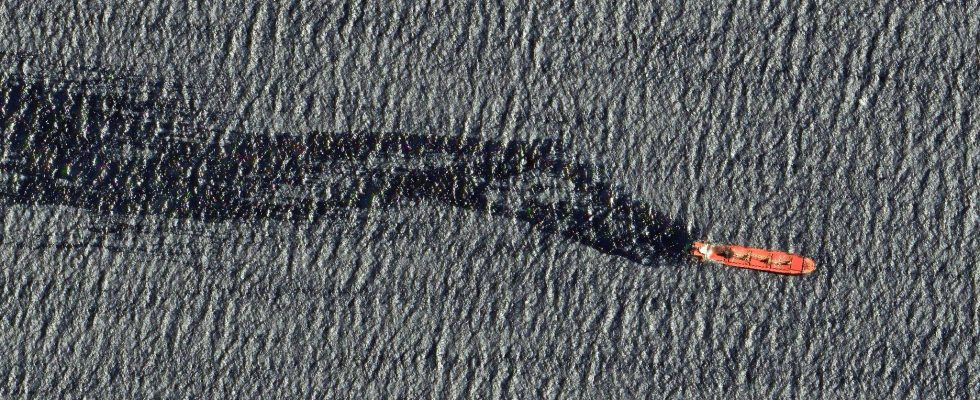Seen from the outside, the Behshad, which has been stationed under the Iranian flag in the Red Sea since 2021, looks like a commercial cargo ship. It is in reality a spy ship, operated by the Islamic Revolutionary Guard Corps. His goal ? Deliver useful information for the identification of Western ships in the Gulf of Aden, while the Houthis of Yemen, who have started a campaign of strikes in support of the Palestinians, do not have direct access to the coastline.
In recent weeks, attacks on ships in the Red Sea by these rebels have not abated. In the space of 48 hours, no less than 43 drones fired by the Houthis were shot down by American and allied forces. On Wednesday March 6, the attacks caused their first victims in the Gulf of Aden: three sailors from a commercial boat died during an anti-ship ballistic missile strike.
Contraband and intelligence
Built in 1999, the Behshad only began to attract attention in 2021, when it replaced another Iranian ship, the Saviz, in the Red Sea. And for good reason: the latter had long been suspected of contributing to arms smuggling and providing information to the Houthis, before being towed to Iran after a mysterious explosion. According to Aurora Intel, an open source intelligence group that monitors the Behshad via satellite imagery, it has not moved from its positions in the Red Sea since it replaced the Saviz. Additionally, the intelligence group reports to Radio Free Europe (RFE) that the cargo ship has since deactivated its automatic identification system (AIS), meaning it does not broadcast its position. It is systematically guarded by Iranian navy ships.
In January, the ship reportedly left its positions in the Red Sea to begin a descent south into the Gulf of Aden. It has been waiting since January 11, just 100 kilometers east of the port of Djibouti, according to the ship tracking and maritime intelligence service MariTrace. “This coincides with an increase in Houthi attacks in the Gulf of Aden,” Jeremy Binnie, a Middle East defense specialist at global intelligence firm Janes, told RFE.
In the sights of the United States
Most recently, in February, the United States carried out a cyberattack against two Iranian military ships, including the Behshad. According to several American media outlets citing the Pentagon, the United States acted in response to the killing of three American soldiers in Jordan at the end of January by militias supported by Iran. American officials, cited by NBC Newsthus claimed that Iran is using the ship to provide targeting information to the Houthis so that their attacks on the ships are more effective.
Asked about the ship’s activities, Iranian Ambassador to the UN, Amir Saeid Iravani, told NBC News that the Behshad was in the Red Sea “to combat piracy activities” and was not providing intelligence to Houthi forces. “These ships claim to be anti-piracy garrison ships, but in reality, they are Iranian arms transshipment points. The Beshad and its sister ship Safiz are also loaded with Iranian electronic intelligence equipment used to locate target ships that the Houthis must attack”, affirmed to our colleagues at The Free researcher Michael Knights, of the Washington Institute for Near East Policy, a pro-Palestinian institute.
After the death of the three American soldiers in Jordan, American Defense spoke, according to the press, of physical targeting of Behshad. But the plan was quickly discarded: targeting Behshad would be seen as a direct attack on Iran. In a video posted on the Iranian army’s Telegram channel on February 4, a soldier warned against any movement around the ship: “Those who engage in terrorist activities against the MV Behshad or similar ships endanger international shipping routes, security and take global responsibility for future international risks.”
Since January, the United States and the United Kingdom have launched repeated strikes on Houthi targets in Yemen, but the rebels have continued their attacks in the Red Sea and the Gulf of Aden. Many commercial ships have been forced to turn away from this route through which, normally, 12% of world trade passes.
